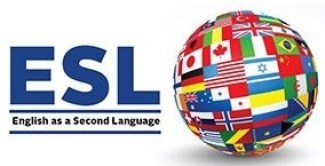 Sign language is a fully developed, natural language primarily used by people who are Deaf or hearing impaired. It relies on hand signs, visual gestures, body language, facial expressions, and other non-verbal cues such as head movements to convey meaning and emotion. More than just a communication tool, sign language holds deep cultural significance within Deaf communities around the world. Like spoken languages, sign languages follow distinct grammatical rules and are shaped by culture and history.
Sign language is a fully developed, natural language primarily used by people who are Deaf or hearing impaired. It relies on hand signs, visual gestures, body language, facial expressions, and other non-verbal cues such as head movements to convey meaning and emotion. More than just a communication tool, sign language holds deep cultural significance within Deaf communities around the world. Like spoken languages, sign languages follow distinct grammatical rules and are shaped by culture and history.
Contrary to popular belief, there is no single universal sign language. Instead, there are over 300 distinct sign languages worldwide (National Geographic), each with its own unique vocabulary, grammar, and cultural identity. For example, American Sign Language (ASL) and British Sign Language (BSL) are entirely different languages, despite being used in English-speaking countries. In fact, ASL shares more similarities with French Sign Language (LSF) due to historical influences in Deaf education. Regional dialects and variations also exist within each of these languages. Additionally, there is International Sign, a simplified, non-standardized form of sign language used in global conferences and cross-cultural settings. While useful, it is not considered a full language.
Sign languages are used by an estimated 70 million people around the world as their primary means of communication. These languages are a reflection of cultural diversity and play a vital role in fostering inclusion, identity, and community among Deaf populations. However, the level of official recognition and access to services varies widely between countries. Some, like the Netherlands, have granted their national sign language legal status, while others still lack formal recognition. In the United States and parts of Canada, American Sign Language (ASL) is the most commonly used sign language. Estimates of ASL users range from 500,000 to 2 million (un.org), depending on the source. Broader estimates suggest that between 2 to 3 million Americans use sign language in some capacity (Gitnux Market Data). ASL is also the third most studied language in U.S. higher education, after Spanish and French, indicating growing interest and awareness (gallaudet.edu). ASL itself has regional and cultural variations, including Black ASL, which developed within historically segregated schools for the Deaf, and Tactile ASL, used by Deaf-blind individuals. These variations reflect the rich cultural dimensions within ASL and its users.
While exact numbers are difficult to pinpoint, roughly 2.5% of Iowa’s residents were reported to use sign language in some form as of 2017. This figure includes both native users and those using it for professional or personal communication. Iowa offers multiple educational and community-based opportunities to learn and engage with ASL. The Iowa School for the Deaf offers free and low-cost ASL classes, both in-person and online. ASL coursework, clubs, and cultural outreach events like Deaf Awareness Week are offered at universities, including the University of Iowa and Iowa State. Locally, Scott Community College offers a Deaf Studies Certificate as well as an AAS Degree in American Sign Language – English Interpreting. Online and self-guided platforms, including apps, are also learning avenues that are readily available.
In Scott County, American Sign Language is present both educationally (as mentioned above) and culturally. Although specific usage numbers for Scott County are not readily available, the presence of accredited interpreter training and educational resources indicates awareness, accessibility, and a growing support network for sign language learners and the local Deaf community. Residents also have access to a range of learning options including university outreach, online platforms, and community-based events.
Check out some of the FREE Sign Language resources available to you at The Library. See our online catalog or ask a Librarian for more resources.
FOR A BEGINNER INTRODUCTION TO SIGN LANGUAGE:
American Sign Language for beginners : learn signing essentials in 30 days
Sign language made easy. ABCs, numbers & everyday signs
The American sign language phrase book
Idioms & phrases in American Sign Language. Volume 2
SIGN LANGUAGE INSTRUCTION:
Barron’s American Sign Language : a comprehensive guide to ASL 1 and 2
American sign language demystified
Instant Immersion American Sign Language
SIGN LANGUAGE DICTIONARIES:
Random House Webster’s American sign language dictionary
The Gallaudet Dictionary of American Sign Language
Barron’s dictionary of American Sign Language
The joy of signing : a dictionary of American signs
OTHER SIGN LANGUAGE AND RELATED RESOURCES:
Reading between the signs : intercultural communication for sign language interpreters
How to talk in the Indian sign language
Thinking with your hands : the surprising science behind how gestures shape our thoughts
Dictionary of gestures : expressive comportments and movements in use around the world
SIGNING FOR KIDS:
My first book of sign language
Simple signing with young children : a guide for infant, toddler, and preschool teachers
We can sign! : an essential illustrated guide to American Sign Language for kids
I want to learn sign language. Volume 1 everyday sign language lessons for children ages 5-12
Sign language for kids activity book : 50 fun games and activities to start signing
SIGNING FOR BABIES:
Baby sign language / More Than 150 Signs Baby Can Use and Understand
Teach your baby to sign : an illustrated guide to simple sign language for babies
Baby sign language made easy : 101 signs to start communicating with your child now
Baby signs : how to talk with your baby before your baby can talk
Essential baby sign language : the most important 75 signs you can teach your baby
El gran libro de Baby Sign : guía teórico-práctica para triunfar con el método
NEXT MONTH… LEARN A LANGUAGE — Part 12 — LIBGUIDE for LANGUAGE LEARNING RESOURCES
.































 English is considered the global language, or lingua franca, which means it is often used as a common language between speakers of different native languages in business, education, and international communication. Because of this, both children and adults around the world invest significant time and resources into mastering the language for many reasons, but particularly for better educational and professional opportunities. Learning English as a Second Language (ESL) or English as a Foreign Language (EFL) has become increasingly important in today’s interconnected world. According to the British Council in 2023, over 1.5 billion people globally are currently learning English, making it the most widely studied language on the planet. As English continues to dominate international media, science, and diplomacy, learning the language provides valuable advantages.
English is considered the global language, or lingua franca, which means it is often used as a common language between speakers of different native languages in business, education, and international communication. Because of this, both children and adults around the world invest significant time and resources into mastering the language for many reasons, but particularly for better educational and professional opportunities. Learning English as a Second Language (ESL) or English as a Foreign Language (EFL) has become increasingly important in today’s interconnected world. According to the British Council in 2023, over 1.5 billion people globally are currently learning English, making it the most widely studied language on the planet. As English continues to dominate international media, science, and diplomacy, learning the language provides valuable advantages.















































































 Learning Chinese opens doors to understanding a rich and ancient culture and a language that is increasingly relevant in our globalized world. Mandarin Chinese, the most widely spoken language in the world, boasts over 1.1 billion native speakers, primarily in China, Taiwan, and Singapore, along with Macao, Hong Kong, Malaysia, and Indonesia (worlddata.info). Mandarin Chinese is also spoken in at least 21 other countries as a mother tongue by a part of the population. The Wu and Min dialects of Chinese each have upwards of 80 million native speakers, and both languages are only spoken in Taiwan and some regions of China. There are many vibrant Chinese-speaking communities or “Chinatowns” across the world, including in the United States, the United Kingdom, Nigeria, and Madagascar (worldpopulationreview.com).
Learning Chinese opens doors to understanding a rich and ancient culture and a language that is increasingly relevant in our globalized world. Mandarin Chinese, the most widely spoken language in the world, boasts over 1.1 billion native speakers, primarily in China, Taiwan, and Singapore, along with Macao, Hong Kong, Malaysia, and Indonesia (worlddata.info). Mandarin Chinese is also spoken in at least 21 other countries as a mother tongue by a part of the population. The Wu and Min dialects of Chinese each have upwards of 80 million native speakers, and both languages are only spoken in Taiwan and some regions of China. There are many vibrant Chinese-speaking communities or “Chinatowns” across the world, including in the United States, the United Kingdom, Nigeria, and Madagascar (worldpopulationreview.com). The history of the Chinese language dates back over 4,000 years, with the earliest written records found on oracle bones from the Shang dynasty (c. 1600–1046 BCE). Over centuries, the language evolved through various stages, including Old Chinese, Middle Chinese, and Modern Standard Chinese. The development of a standardized written form, based on the Beijing dialect, was a significant step in unifying the languages spoken in China – a family of dialects with significant regional variations. Mandarin, the official language of China, is the most widely spoken, with approximately 70% of the population using it as their primary language. Other major dialects include Cantonese (spoken in Guangdong province and Hong Kong), Wu (including Shanghainese), Min (including Hokkien), and Xiang. Each dialect has its own unique phonetic, lexical, and grammatical features, and many are not mutually intelligible (fluentu.com). Other than in China, the Chinese language is spoken in 21 other countries as a mother tongue by at least a part of the population including many neighboring countries in Asia and surrounding regions (listed above), but also further south to Australia and New Zealand and parts of Oceania. The language is also spoken in Chinese communities or “Chinatowns” across the world, including in the United States and Canada, the United Kingdom and other locations in Europe, along with a small number of countries in Central and South America as well as some African nations like Nigeria and Madagascar.
The history of the Chinese language dates back over 4,000 years, with the earliest written records found on oracle bones from the Shang dynasty (c. 1600–1046 BCE). Over centuries, the language evolved through various stages, including Old Chinese, Middle Chinese, and Modern Standard Chinese. The development of a standardized written form, based on the Beijing dialect, was a significant step in unifying the languages spoken in China – a family of dialects with significant regional variations. Mandarin, the official language of China, is the most widely spoken, with approximately 70% of the population using it as their primary language. Other major dialects include Cantonese (spoken in Guangdong province and Hong Kong), Wu (including Shanghainese), Min (including Hokkien), and Xiang. Each dialect has its own unique phonetic, lexical, and grammatical features, and many are not mutually intelligible (fluentu.com). Other than in China, the Chinese language is spoken in 21 other countries as a mother tongue by at least a part of the population including many neighboring countries in Asia and surrounding regions (listed above), but also further south to Australia and New Zealand and parts of Oceania. The language is also spoken in Chinese communities or “Chinatowns” across the world, including in the United States and Canada, the United Kingdom and other locations in Europe, along with a small number of countries in Central and South America as well as some African nations like Nigeria and Madagascar.

































 Globally, the Korean language is spoken by over 80 million people, primarily in South Korea (51.7 million) and North Korea (26.4 million). Beyond the Korean Peninsula, significant Korean-speaking communities exist due to historical migration, notably China with approximately 2 million speakers. Japan hosts about 500,000 Korean speakers, mainly descendants of Koreans who migrated during the early 20th century. Further abroad, the United States is home to around 1.8 million Korean speakers, with large communities in cities like Los Angeles, New York, and Washington D.C. Other countries with notable Korean-speaking populations include Russia, with approximately 250,000 speakers, and Canada, where around 218,000 individuals speak Korean (worlddata.info). Australia has a Korean-speaking population of about 102,000, primarily residing in New South Wales. Smaller communities are also found in countries such as Uzbekistan, Kazakhstan, and various European nations. These global communities maintain the Korean language through cultural institutions, schools, and media, preserving their linguistic heritage and contributing to the worldwide spread of Korean culture (britannica.com and pathtokorean.com).
Globally, the Korean language is spoken by over 80 million people, primarily in South Korea (51.7 million) and North Korea (26.4 million). Beyond the Korean Peninsula, significant Korean-speaking communities exist due to historical migration, notably China with approximately 2 million speakers. Japan hosts about 500,000 Korean speakers, mainly descendants of Koreans who migrated during the early 20th century. Further abroad, the United States is home to around 1.8 million Korean speakers, with large communities in cities like Los Angeles, New York, and Washington D.C. Other countries with notable Korean-speaking populations include Russia, with approximately 250,000 speakers, and Canada, where around 218,000 individuals speak Korean (worlddata.info). Australia has a Korean-speaking population of about 102,000, primarily residing in New South Wales. Smaller communities are also found in countries such as Uzbekistan, Kazakhstan, and various European nations. These global communities maintain the Korean language through cultural institutions, schools, and media, preserving their linguistic heritage and contributing to the worldwide spread of Korean culture (britannica.com and pathtokorean.com). But, according to a 2021 report from the language learning app, Duolingo, Korean is in the top 6 most popular languages to learn around the world (English, Spanish, French, German, Japanese, Italian, and Korean). The surge in interest in learning Korean is largely attributed to the global phenomenon known as the Korean Wave, or “Hallyu,” which encompasses the international popularity of Korean music, films, and television dramas. This cultural movement has significantly increased the number of non-native speakers learning Korean, as individuals seek to engage more deeply with Korean media and culture (linguakorean.com and asiasociety.org). Learning Korean opens doors to various career opportunities, especially in fields like international business, technology translation, and diplomacy. South Korea is home to global giants like Samsung, Hyundai, and LG, making knowledge of the Korean language an asset for professionals looking to engage in the East Asian market (koreatimes.com). Moreover, the U.S. government considers Korean a critical language, offering scholarships and career opportunities in agencies such as the CIA, Department of State, and NSA for individuals with Korean language skills.
But, according to a 2021 report from the language learning app, Duolingo, Korean is in the top 6 most popular languages to learn around the world (English, Spanish, French, German, Japanese, Italian, and Korean). The surge in interest in learning Korean is largely attributed to the global phenomenon known as the Korean Wave, or “Hallyu,” which encompasses the international popularity of Korean music, films, and television dramas. This cultural movement has significantly increased the number of non-native speakers learning Korean, as individuals seek to engage more deeply with Korean media and culture (linguakorean.com and asiasociety.org). Learning Korean opens doors to various career opportunities, especially in fields like international business, technology translation, and diplomacy. South Korea is home to global giants like Samsung, Hyundai, and LG, making knowledge of the Korean language an asset for professionals looking to engage in the East Asian market (koreatimes.com). Moreover, the U.S. government considers Korean a critical language, offering scholarships and career opportunities in agencies such as the CIA, Department of State, and NSA for individuals with Korean language skills.


















 The Italian language has a long and rich history in the United States. For centuries, especially during the late 19th and early 20th centuries, large numbers of Italians immigrated to the U.S. in search of a better life. They tended to settle in large cities where they established thriving Italian communities. Today, many of their descendants continue to speak Italian and maintain their cultural heritage. Roughly 764,000 people in the U.S. speak Italian at home according to the U.S. Census Bureau. New York and New Jersey have the highest number of native Italian speakers (294,000 and 116,000, respectively), but communities of Italian speakers can also be found across the country, especially in large cities like Chicago, Miami, Philadelphia, Boston, St. Louis, and Buffalo, among others. Italian is still an essential regional language in many American communities. Depending on the source, Italian is listed as high as the 4th (and as low as the 12th) most-studied foreign language in the United States. Since much language learning now occurs online or casually through an app, and not in a formal classroom setting, these numbers are difficult to confirm.
The Italian language has a long and rich history in the United States. For centuries, especially during the late 19th and early 20th centuries, large numbers of Italians immigrated to the U.S. in search of a better life. They tended to settle in large cities where they established thriving Italian communities. Today, many of their descendants continue to speak Italian and maintain their cultural heritage. Roughly 764,000 people in the U.S. speak Italian at home according to the U.S. Census Bureau. New York and New Jersey have the highest number of native Italian speakers (294,000 and 116,000, respectively), but communities of Italian speakers can also be found across the country, especially in large cities like Chicago, Miami, Philadelphia, Boston, St. Louis, and Buffalo, among others. Italian is still an essential regional language in many American communities. Depending on the source, Italian is listed as high as the 4th (and as low as the 12th) most-studied foreign language in the United States. Since much language learning now occurs online or casually through an app, and not in a formal classroom setting, these numbers are difficult to confirm. 

































































































